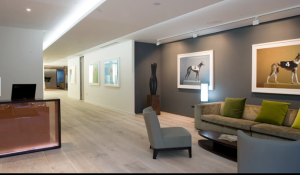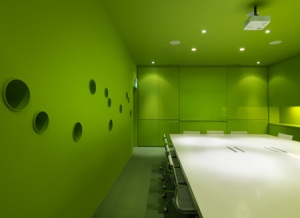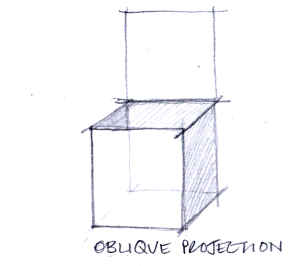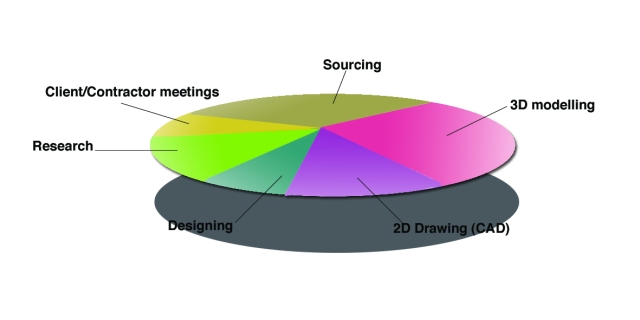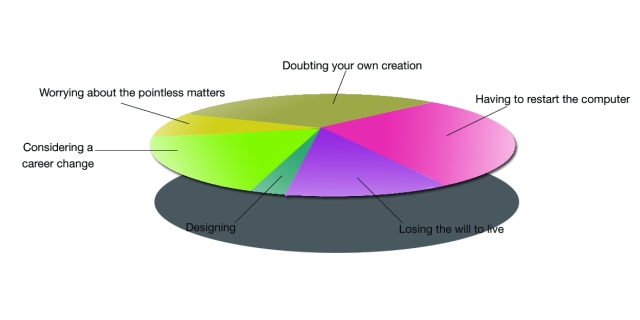Following my meeting with the Interior Educators at the RCA last week where we entered into discussions about the future of interior design education, I thought I would include in my blog, my paper, that I wrote for my PGCE this year, which was written when I was teaching on the Foundation Degree.
I feel very strongly about the future of design education in this country, mainly due to my role as a lecturer (now teaching at BA level). Each year I see more, and more students at 18, struggling with degree courses and could be attributed to the fact that design education at secondary level is in the decline.
So even if you don’t have the energy to read through my paper please sign the petition to save creativity in education.
http://www.baccforthefuture.com/
So here goes . . .
In December 2011, the Coalition government published their report, ‘Innovation and Research Strategy for Growth’, which describes a vision for boosting business investment through innovation, with the hope of encouraging global success in the UK economy (Department for Business Innovation and Skills, 2011).
This has sparked a number of supporting reports such as ‘Design for Innovation, 2011), that contests that design and creativity should be an integral part of the Government’s plans for economic growth. The future therefore could be characterised as appearing more optimistic for designers such as myself, teaching those pursuing a career in Interior Architectural Design.
In respect of teaching the Foundation Degree in Arts (FDa) in Interior Architectural Design, which is categorised at Level 4 and 5 in the National Qualifications Framework (Avis et al, 2010), I have had the experience of teaching three groups over the last two and a half years in two institutions.
A key facet of this paper is to discuss the relevance of the introduction of New Labour’s ‘vocational FDa’ in the discipline of Interior Architectural Design and discuss how the FDa curriculum offers a different skill-set to other higher qualifications.
This paper also discusses how the pedagogical approach of the FDa is addressing the development of fundamental design skills in creative-thinking, literacy and professional communication.
In conclusion, I will suggest strategies based on my findings on how design education will have to develop to respond to new government strategies and industry requirements and what measures are to be taken to ensure we, as design educators, deliver a curriculum that is fit-for-purpose.
CONTEXT: Setting the Foundations
In 2000, David Blunkett, the Secretary of State for Education and Employment announced the introduction of a new two-year Foundation degree (Harvey, 2011), created to bridge the gap of a perceived shortage of technical-based people entering the workforce at a higher level than those fulfilling an apprenticeship. The Higher Education Funding Council for England noted that the Foundation Degree was to bring:
A much needed innovation and cultural change to the higher education sector, including greater appreciation by providers of the requirements of employers and a need to develop and adapt courses swiftly and effectively to generate employability skills. (fdf, 2008.p.3).
Since it’s introduction, there has been a significant decline in other vocational level 5 qualifications, noticeably the HND and HNC, reflecting the growing popularity of Foundation degrees in attracting students wishing to study part-time, mature students and those wishing to use it as a stepping-stone to an honours degree.
A key feature of the FDa was to have input from employers, assisting in the development, review, deliverance and assessment of this programme. In the Leitch Report, it was further highlighted, as a new type of “employer led provision” (Leitch, 2006. p.77), which was set to see our skills sector strengthen.
CONTEXT: Educating designers.
In 2010, a survey revealed that 51% of designers had a degree level qualification (Design Council, 2010). Even though it is not essential to have any form of qualification to work within the discipline of Interior Architectural Design, it is considered to be the norm. The majority of employers in the field are keen to see evidence of a diverse set of skills within a portfolio of design work, however the average route into a career in interior design is currently very narrow- school to undergraduate level and possibly postgraduate (Design Commission, 2011). In today’s industry, employers still recognise a Bachelor’s degree as a seal of excellence in design education.
The current arguments that come from the design industry, suggests that young designers entering into the workplace with a Bachelors degree may demonstrate high levels of creativity but have generally not obtained the relevant technical and work-based skills needed to survive within a very competitive industry. (Design Commission, 2011).
The pedagogical approach to the FDa Interior Architectural Design, two year curriculum, introduces students to the traditional methods of technical hand drawings skills, developmental sketchbooks, current industry practice of Computer Aided Design (CAD) and 3D visualisation, work-based skills (WBL) and personal and professional development (PPD). Creativity is encouraged through research at ‘concept’ stage, by sourcing inspirational imagery. This begins the design process. Through the production of sketchbooks, the development of design is monitored so, upon assessment, we can see how a student has arrived at their final design scheme. In the workplace however, a designer rarely has the luxury of creating such a creative workbook. But the concepts behind improving sketching ability, will allow a designer to feel confident with interpreting their ideas quickly and effectively, without the need to use modern methods such as CAD.
In my experience, the FDa in Interior Architectural Design places strong emphasis on developing work-based learning (WBL) skills within the curriculum, with four modules for WBL and PPD delivered over the two years. These can be embedded into ‘live briefs’, in which we, as tutors, construct project briefs based on existing buildings. This ‘live brief’ encompasses one semester and has proven to be successful in embedding functional skills in literacy and numeracy, to those students that may have struggled had they opted to study at bachelor degree level.
The emphasis on WBL skills in the FDa may stir criticism from creative tutors as it is a common module, covered by all FDa’s. It is thought to remove emphasis away from the creative attributes of an art course, but what it does allow tutors to do, is to tailor written assignments to mimic professional reports that would have to be presented within the workplace. Within Interior Architecture students have to present a design report of 2000 words at the end of the module, which is:
To develop skills in research, setting clear objectives, action planning and presenting a report. It offers students the opportunity, in co-operation with the organisational client, to access information and resources to tackle work-based issues that is related to modules currently being studied in the programme and of relevance to the student’s employment and career.
(Leeds Metropolitan University, 2007,p.40).
This is a much-needed skill within the industry, as the need for written documentation as letters, emails or reports, is a demonstration of a professional level of articulation expected in a designer.
It also develops the student’s understanding of the design process and the importance of research to enhance creative-thinking within the overall process, a teaching method emphasised in Hatchuel’s ‘Concept-Knowledge Theory’ (C-K) in which there is a direct correlation with developing creativity to generate new knowledge through exploration. (Hatchuel et al, 2008). There is much to be said about developing students’ ‘life-research’ to enhance creative-thinking, an idea which is reiterated by a study into Creative training in higher education. Lau has developed six factors, which develop the student’s creative training. (Lau,2009)
(1) identifying design student’ thinking habits;
(2) developing students’ intrinsic motivation by fun;
(3) developing students’ self determination;
(4) developing students’ positive and forward thinking;
(5) managing students’ emotions;
(6) removing students’ obstacles to creativity. (Lau, 2009, p.155)
Since the days of art and design degrees being delivered in Art colleges or Polytechnics, these institutions always embraced creativity. This has continued within some higher education institutions, where the onus is on enhancing innovation, creativity and research, however, within the written curriculum of FDa Interior Architectural design, creativity is only highlighted within the first four modules, where learning outcomes underpin a “broad range of skills essential and in context of Art and Design” (Leeds Metropolitan University, 2007). Jackson, highlights that problems occur in higher education, as creativity upsets the “Status quo as we teach students to unlearn the compliant habits they have acquired through years of formal education” (Jackson et al, 2007.p.208).
In support of the curriculum of the FDa, I would say that as tutors, we put onus on being able to demonstrate the ability to conceptualise through drawing, whilst emphasising the importance of being able to present those ideas both verbally and written, bringing the knowledge-based understanding together with creativity.
The contact time between tutor and student, only allows for a set of four lectures per week with limited tutorial time. For a full-time course, this means that for the remainder of the week, students carry out ‘self-directed’ learning. ‘Self–directed’ learning is usually carried out at home, away from peers, and is thought, by many students to be an individual process. In a subject, such as design, this is not conducive to the learning process. Any creative subject at degree level needs to promote a ‘studio culture’, as it focuses on the hidden curriculum (Kelly, 2004), allowing a design student to learn fundamental skills such as competitiveness, teamwork, mentoring and social skills. Studio culture is under threat as cohorts are growing and staff numbers have decreased by 30% since 1998 (Milliner, 2003). In Attoe and Mugerauer’s article they highlight the prevalence in:
The pedagogical technique used in most design studios is criticism of each student’s efforts at synthesis. Typically, an architectural “problem” is posed and information relating to the problem is made available. Then the student undertakes the sometimes lengthy and often frustrating process of finding a “solution”. The studio teacher talks frequently and at length with the student during this problem-solving and synthesising process. (Attoe and Mugerauer, 1991, p.41)
Without this important exercise, students do not have the ‘experience’ and are only witnessing a formal curriculum (Kelly, 2004).
Upon final assessment, students are required to complete all 15-credit modules. The criteria for assessment, is that all the learning outcomes are met. I would argue that the assessment process solely focuses on the objectives defined by the learning outcomes, as opposed to the subjective content of the design project. In other words, are their designs showing innovation and creativity and do they adhere to current UK building standards? This is my criticism of the Leeds Metropolitan degree, which I feel is out-dated, unchanged since 2007, and has therefore not responded to social, economic or cultural demand of recent years.
Courses appear to be written, but not developed, and it could be argued that the original remit of the FDa of industry shaping and inputting into the content of the courses is not being fulfilled. The Design Commission, in their ‘Restarting Britain’ report, focused upon the need for reform for design education and growth. They highlighted the fact that if design courses have a loss of all vocational pathways it would be lamentable, “especially as design is, at heart, an applied discipline” (Design Commission, 2011.p.13).
Conclusion
There have been many criticisms over the intermediate vocational, foundation degree curriculum from both the industry and from educators.
The current pedagogical practice on the FDa Interior Architectural Design programme, centres it’s deliverance of modules through ‘live briefs’, lectures and tutorials.
In my opinion, there is a need to establish ‘peer-to-peer’ learning through Studio Practice. This needs to be compulsory to the curriculum with credits awarded for engaging in ‘Studio Culture’, to widen their design development. This would help to embed Lau’s six factors of creative-thinking within the FDa curriculum, to encourage their creative ability (Lau, 2009).
Design Lecturers, also need to ensure that they are aware of, or in current practice, as to maintain specialist Continual Professional Development as to be in line with their colleagues teaching on Bachelor degree programmes.
To enable the transition from the FDa to the workplace, we have to make moves to establish connections with local creative industries, and introduce work-experience as part of the curriculum. We as tutors can encourage creativity as part of the design process, teach relevant IT, literacy and communication skills but we are unable to cover relevant skills that can only be learnt ‘on-the-job’.
The Foundation degree, sells itself as a vocational course but not in all instances does it adhere to this. If we were to treat this form of qualification as a form of ‘higher’ apprenticeship scheme, allowing local creative employers to have direct involvement in the curriculum, by taking on students during their studies, this would see a vast improvement in the calibre of FDa students that we are releasing post programme. This would increase the reputation of the FDa and would see an increase in competition with their peers studying on a Bachelor’s Degree. For one of the key selling points from those applying for jobs, is relevant work-experience. This would offer the FDa a unique selling point to employers.
The success of our workforce of young designers can only be achieved, if we ensure that design education is delivering current trends and practices reflecting current technological advancements. The UK government’s new initiatives to establish the UK as a country for innovation, will fair well for the popularity of the design courses and will hopefully become a further driving force for the development in design education, as innovation becomes a recognised commodity. With the option of many alternative routes into higher education in design, we will therefore, hopefully, be delivering a workforce with varying sets of skills, to enable us to compete globally and strengthen our reputation for being a country delivering ‘design excellence’.






